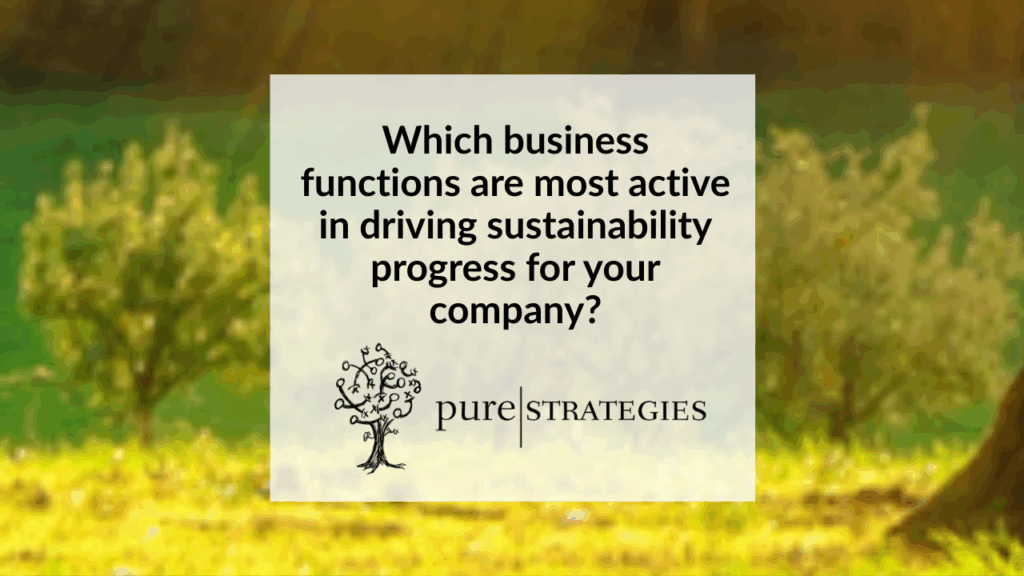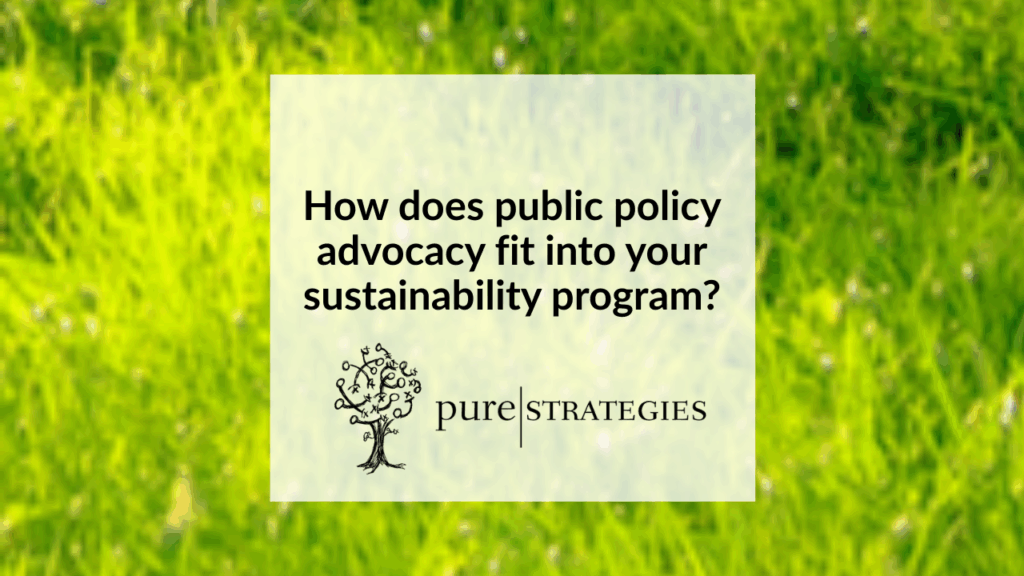With 2020 around the corner and many corporate sustainability goals set to expire, companies are working to set the next generation of targets. Now is the time for setting goals with impact. We learned that the incremental goals from the past led to limited progress. Real transformational change is required to tackle issues such as climate change, water risk, and biodiversity loss, among others. Companies need to have their next generation of sustainability goals be bigger and bolder.
Tips for Setting Goals with Impact. With scores of companies embracing science-based climate targets, we can look to what it takes to set these goals and apply the approach to the biggest environmental and social risks across the business.
Address the big issues with the right scope. When General Mills did a formal materiality assessment, it identified eight priority issues, with climate change being one. After evaluating its greenhouse gas (GHG) emissions footprint to understand climate risks and improvement opportunities, the company found that 60 percent of GHG emissions were upstream of their operations. General Mills was then one of the first to establish supply chain climate goals, with a 28 percent reduction in absolute GHG emissions by 2025 compared to 2010 for scope 1, 2, and 3 emissions.
As General Mills did, goal setting efforts start by understanding the issues that are most material to the company and where hotspots lie across the value chain. The Global Reporting Initiative outlines formal materiality methods. The Sustainability Accounting Standards Board (SASB) offers tools that can also help. However, this is just one step. It is important to also identify where the risks are coming from in the value chain. General Mills identified its priority issues through materiality assessment but looked at their carbon footprint to understand where their efforts needed to be. This is now a formal part of the Science Based Target Initiative methodology when setting such climate targets. This insight can be applied to other issues, from chemicals to water.
Some impact areas are local in nature such as fresh water. For these impacts, understanding the context is critical. General Mills identified eight priority watersheds around the world in a four phase approach to sustainable supply chain water use. Using a context-based parameter, the company is reviewing the watershed science to guide its goal setting process.
Get past incrementalism and make meaningful change. The most important shift in goal-setting today is moving away from targeting what is doable and instead aiming for what is needed. This approach is most prominent in science-based climate targets. Companies are aiming to decrease greenhouse gas emissions to the level required to keep global temperature increase below critical warming thresholds of 1.5 and 2 degrees Celsius compared to pre-industrial temperatures. However, climate is one of the nine planetary boundaries we face as a society. There are serious threats to others, such as land-system change, fresh water use, biodiversity, and biochemical flows – such as nitrogen and phosphorus. Setting science-based goals is applicable to these other areas as well.
Mars is an excellent example of a company that has successfully revamped its business sustainability goals to operate within planetary boundaries while delivering positive social impact. In addition to climate, Mars is addressing land use change and ending deforestation in its supply chains for beef, cocoa, palm oil, paper and pulp, and soy. Working with The Forest Trust, ProForest and WRI, the company has identified key areas of high deforestation risk and established clear policies and implementation plans for these raw materials to end deforestation.
A useful resource for this comes from global luxury group Kering. The company published a white paper to encourage companies to use the Planetary Boundary framework to understand the consequences of their environmental impacts at a global level, while providing a critical new perspective for effective action and sustainability goal setting.
Looking at chemicals, instead of looking to incrementally address one chemical of concern after another, Seventh Generation, long a leader in safer, sustainable products, set out a target to have 100 percent of products free of chronic toxicants and not acutely orally toxic by 2020. The company has been progressing steadily on this target, and in 2018 met significant accomplishments – including achieving 100 percent elimination of boric acid from all product formulas. The company then expanded the scope of preservatives targeted for removal such as Benzisothiazolinone (BIT) and methylisothiazolinone (MIT) which may cause irritation for some individuals, with a goal to eliminate them from all products by 2020.
Engage stakeholders and collaborate with partners. Ken Powell, Chairman and CEO, General Mills notes about their science-based climate target, “We are taking action across our value chain. However, we understand that no one company, industry or government will mitigate climate change. It is an urgent and shared global challenge. Real progress toward more sustainable emission levels will require unprecedented collaboration and collective innovation.”
To establish and progress on goals with the greatest impact, collaborating with key partners and taking advantage of existing resources are critical to success. The Science Based Targets initiative has helped mobilize more than 500 companies to set science-based targets. There are other organizations and resources that support other issues such as plastic waste and recycling.
The Ellen MacArthur Foundation’s Plastics Economy Global Commitment is serving as a galvanizing resource to address plastic waste. Walmart is a signatory to this effort and recently announced its U.S. plastic waste reduction commitments:
- Seek to achieve 100 percent recyclable, reusable or industrially compostable packaging for its private brand packaging by 2025;
- Target at least 20 percent post-consumer recycled content in private brand packaging by 2025;
- Label 100 percent of food and consumable private brand packaging with the How2Recycle® label by 2022.
The Chemical Footprint Project, which Pure Strategies is a co-founder, provides an independent benchmark for addressing harmful ingredient and material use, encouraging companies to set goals to eliminate them in products and throughout their supply chains. Scores of companies participate in the annual survey and use the program to guide their efforts. GOJO, inventors of Purell sanitizer, was an early adopter of the Chemical Footprint Project and used the framework to benchmark and document processes to target areas for improvement. The Chemical Footprint Project helped GOJO to move toward the use of safer chemicals in its products and operations and set a target to reduce its Chemical Footprint by 50% by 2020 to make meaningful change for consumers.
Every day, we either personally face the reality of or hear stories about the Earth running up against planetary boundaries – species extinction, climate change, water risk, and biodiversity loss. We need to set goals that commit our organizations to real transformational change while steering planet Earth away from dystopian fears and towards a more hopeful future. Johan Rockstrom, Executive Director of the Stockholm Resilience Centre notes, “We’re very confident today that if we can be planetary stewards of the nine planetary boundaries, we stand a good chance of a prosperous, socially inclusive future within a safe operating space on Earth.” So, let’s get started!
This article originally appeared in Sustainable Brands on March 28, 2019.


